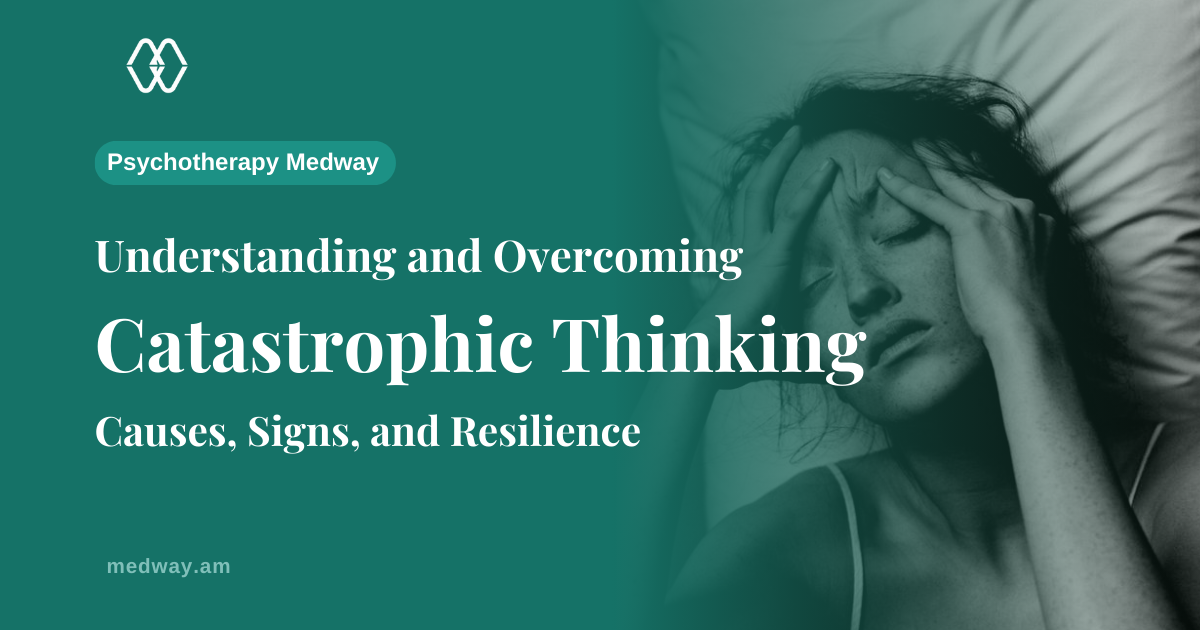
Introduction:
In the labyrinth of mental processes, catastrophizing stands out as a potent force that often leads individuals to focus on the worst possible outcomes. This intricate cognitive pattern, characterized by magnifying small problems and envisioning the direst scenarios, can significantly impact mental health. This article aims to delve deeper into the phenomenon of catastrophic thinking, exploring its causes, recognizing signs, and providing an extensive array of coping strategies to foster resilience.
Understanding Catastrophizing:
Catastrophic thinking's origins are as diverse as the individuals who experience it. Whether learned from family coping mechanisms, stemming from traumatic experiences, or influenced by unique brain chemistry, its roots remain complex and varied. Researchers have uncovered intriguing connections between catastrophic thinking and alterations in the hypothalamus, pituitary responses, and heightened activity in emotional brain regions. This intricate interplay involves the hypothalamus, pituitary gland, amygdala, hippocampus, and prefrontal cortex, underscoring the multifaceted nature of this cognitive process.
Signs of Catastrophizing:
Recognizing the subtle signs of catastrophic thinking is crucial for early intervention. Beyond the overt manifestations of persistent anxiety, repetitive thoughts, and feelings of despair, individuals may find themselves trapped in a cycle of overthinking everyday situations. Negative self-talk, such as predicting inevitable failure or believing in deserving misfortune, becomes a hallmark of this detrimental thought pattern.
Conditions Associated With Catastrophizing:
Catastrophizing isn't an isolated mental phenomenon; it intertwines with various mental health conditions, creating a complex tapestry of challenges. Anxiety, a pervasive mental health condition, often involves feelings of dread and fear over everyday circumstances. Individuals with painful conditions may experience heightened pain catastrophizing, while depression studies consistently report it as a recurring symptom. The intricate link between catastrophic thinking and difficulty sleeping, specifically insomnia-related thoughts, adds another layer to its far-reaching impact.
Effective Coping Strategies:
Breaking free from the clutches of catastrophic thinking demands a multifaceted approach. Therapeutic interventions, such as Cognitive Behavioral Therapy (CBT), Acceptance and Commitment Therapy (ACT), and Dialectical Behavioral Therapy (DBT), offer avenues to reframe negative thought patterns. When therapeutic measures alone fall short, anti-anxiety medications, belonging to the selective-serotonin reuptake inhibitors class, may be prescribed to address underlying anxiety or depression. Mindfulness practices, encouraging individuals to stay in the present moment and experience thoughts nonjudgmentally, serve as potent tools to counter overthinking. Embracing self-care strategies, including journaling, accepting uncertainty, challenging thoughts through "what-if" scenarios, and seeking social support, empowers individuals to navigate the labyrinth of catastrophic thinking.
Conclusion:
As we navigate the depths of catastrophic thinking, understanding its intricacies and developing effective coping strategies becomes paramount for mental well-being. By recognizing signs, exploring diverse causes, and embracing a comprehensive toolkit of coping mechanisms, individuals can embark on a transformative journey towards a more positive and resilient mindset. Whether through therapy, medications, mindfulness, or self-care, the extensive repertoire of available tools empowers individuals to reclaim agency over their mental landscape and build resilience in the face of catastrophic thinking.